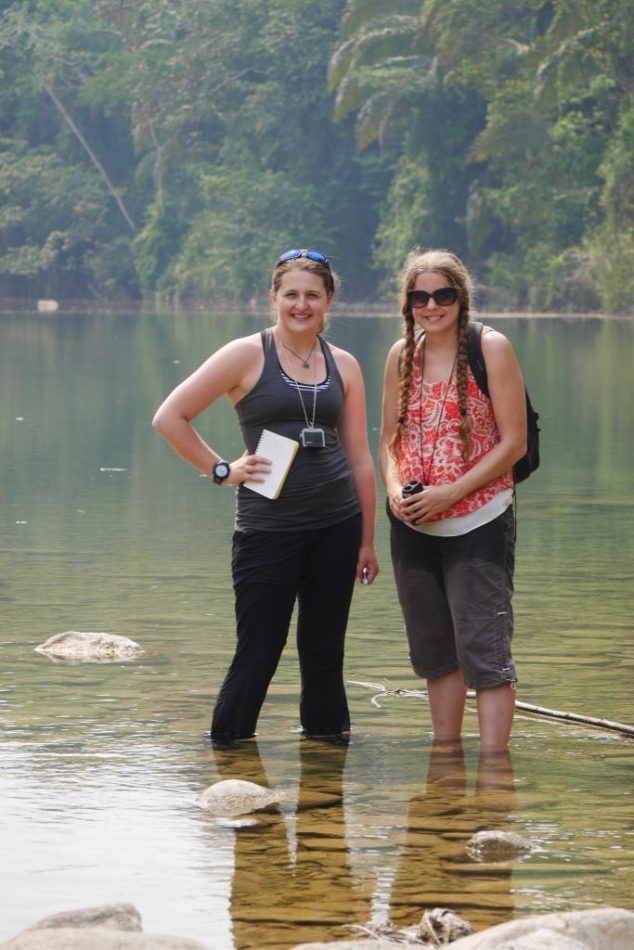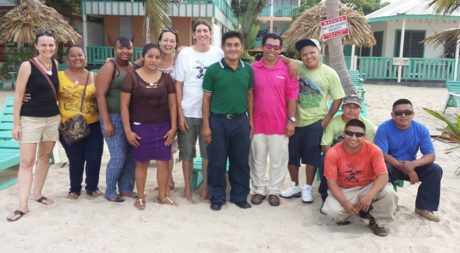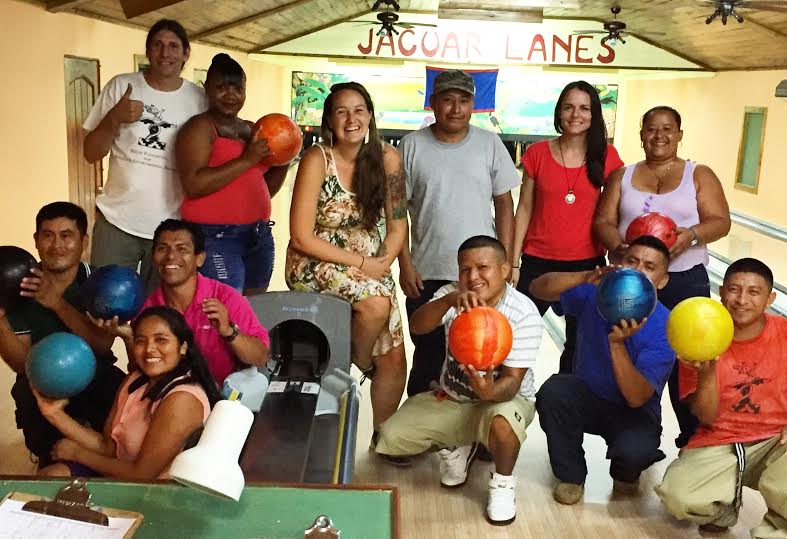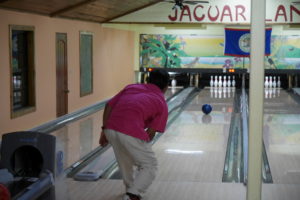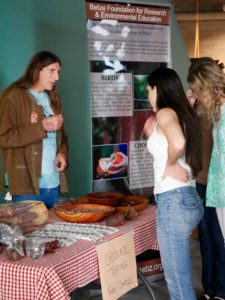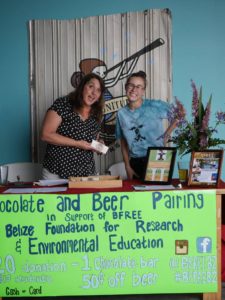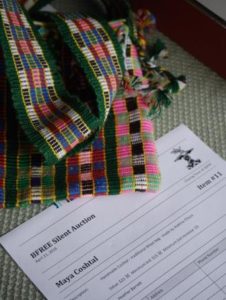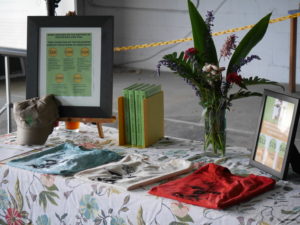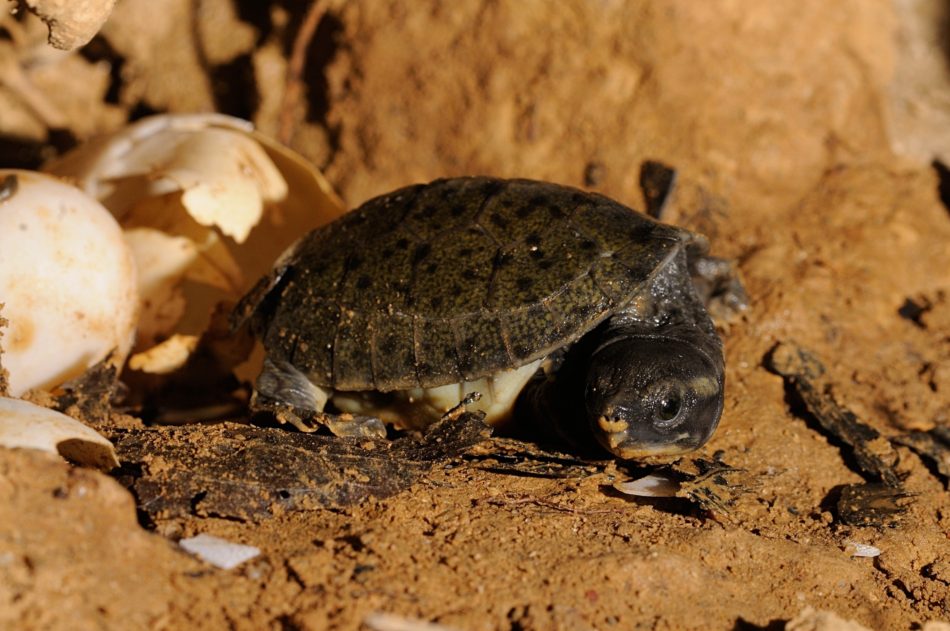Emily Buege – Fish Research on the Bladen River
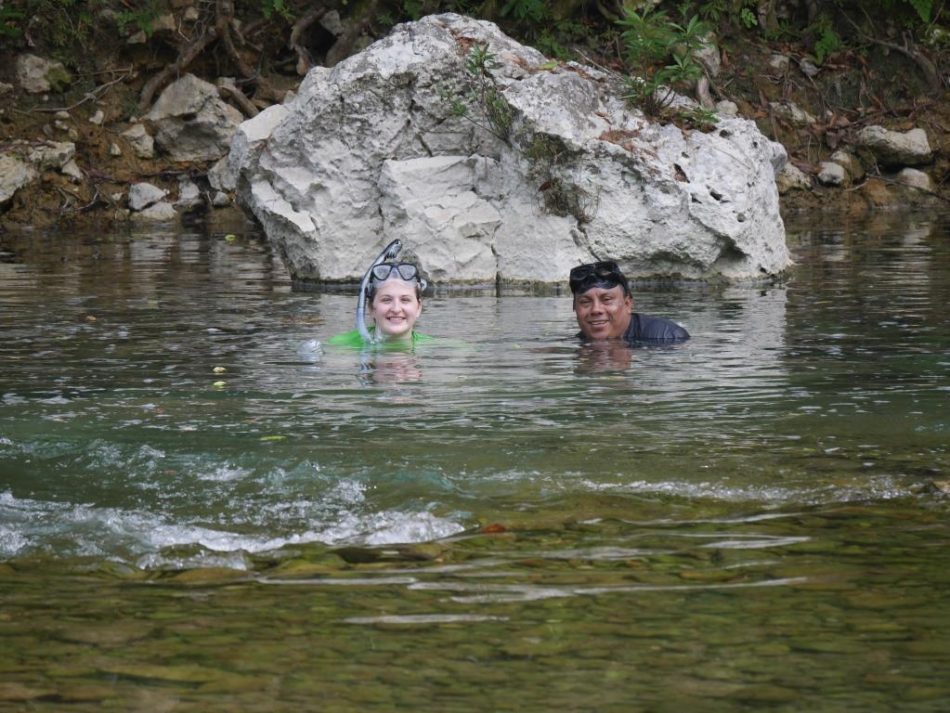
Emily Buege and Melito Bustamante in the Bladen River while studying cichlids. Pic by Tyler Sanville
My name is Emily Buege, and I’m a master’s student in the geography department at the University of Alabama. I’m finishing my first year in the program with my thesis fieldwork at BFREE! Originally from Dakota, Minnesota, I grew up on a state park, so I’ve always been close to nature. I obtained my undergrad degree in biology just down the road at Winona State University (WSU) in spring 2015.
At WSU, I met Dr. Jennifer Cochran-Biederman (then Mrs.), someone who would become one of the most influential people in my life. Jennifer’s master’s thesis had been on the diets of cichlids in the Bladen River and she based out of BFREE. In 2012, I participated in a student trip to Belize that she organized for Winona students. Never traveling to the tropics before, I wasn’t sure what to expect. Having the BFREE experience lessened the appeal of more tourist-based attractions for me. The wildlife is only part of that experience; the scenery, food, company, and accommodations were also big factors that drew me back for my master’s.
I’m interested in all animal taxa – butterflies to jaguar – but I chose a fish-based master’s project because my advisor is a river specialist. My initial plan was to study African tilapia – a highly invasive and destructive species throughout Belize (and much of the rest of the world). I got to Belize and found 3 individuals within reasonable working distance from BFREE, which isn’t exactly enough for an entire study! So, I redirected my research to nesting sites of native cichlids. (Hopefully it’s a testament to BFREE that I was willing to change the entire focus of my study rather than my study site!)
During my time in Belize, I closely analyzed the habitat in the stretch of river near the BFREE crossing and up to Blue Pool. Melito Bustamante, my field guide, and Sarah Praskievicz, my advisor, worked with me during different phases of my study. We noted locations of as many cichlid nests as we could find, and I hope to build a map that reveals the condition types each of four main species prefers to nest in. I’ll be using the data I collected while in Belize to shape my thesis over the next year.
When not in the river, I went for walks in the forest. Melito is an incredible birder, so when we went for walks together, I learned an incredible amount about the bird community here – toucans, tanagers, tinamous. I also encountered a tayra (aka bush dog) near the river; I had never heard of that species until I read about it in a book the night before we sighted it! Another highlight that was different than my last trip was that I had the incredible opportunity to really get to know the staff! I’ve really connected with people I would never have gotten the chance to meet if I weren’t doing this project.
For me, this whole experience has been a lesson in taking life one day at a time. I’m a planner, so I struggled when my project changed. On top of that, I developed an ear infection, Melito got sick and had to leave, and other various challenges arose as I worked through my time at BFREE.
If I were to offer advice to other researches it would be to prepare for everything to go according to plan, but know that it might not! Also, work hard, but don’t let opportunities to experience great things slip away. Finally, get up early and go birding or stay up late and get to know the staff. It all goes by so fast, and you don’t want to leave feeling like you missed out!
A note of thanks:
I want to extend a big thank you to everyone who helped me out during my stay! Between seeking remedies for infections and looking for help in the field, I feel that I kept everyone at BFREE busy. I’m so grateful for all the physical and moral support that I’ve received throughout this experience. Also, many thanks to both my advisors, Dr. Sarah Praskievicz who helped me immensely with the execution of physical habitat sampling and Dr. Peter Esselman who provided invaluable biological guidance in selecting not one, but two, projects. THANK YOU!
P.S. Despite a somewhat chaotic change of research topic at the beginning of my trip, I’m still hoping to continue on with a PhD after my master’s. I’m not sure what animal taxa I envision working on next, but there’s a neotropical river otter that I’ve caught on my fish cameras that seems to be asking me to study it!

